|
Monday, April 9, 2012
Progress Notes
A few weeks ago I was contacted by Eugene Groff of Iberia regarding a very historic old cabin located on the farm of his father, Robert Groff. Known as the Allen cabin, it historically has been known as once being the home of some black Americans who were slaves owned by a man named Elias Allen. Mr. Allen may have been the first settler of the farm which later was purchased by Eugene’s great great grandfather, Benjamin Groff. Eugene called me to inquire as to whether our museum would want to move the historic cabin to our campus. He said the cabin had deteriorated in recent years but because of its historical importance, he wanted to see that it was preserved. Here is a photo of the cabin taken maybe twenty or more years ago (photo 01):
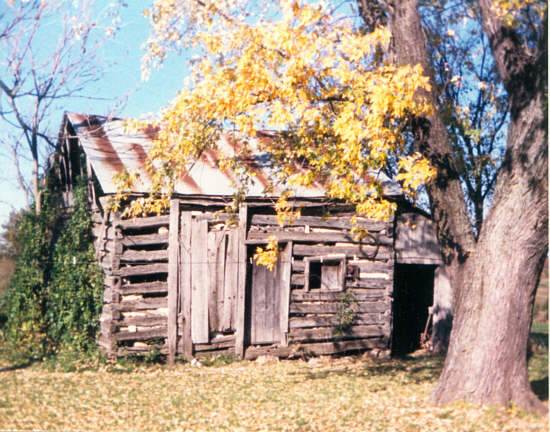
01 Allen Slave Cabin
I told Eugene that certainly I was interested in a cabin this old which was part of our county’s history. So I and Harold Flaugher went over to the Groff farm and met Mr. Robert Groff who happened to be outside near the cabin when we arrived (photo 02).
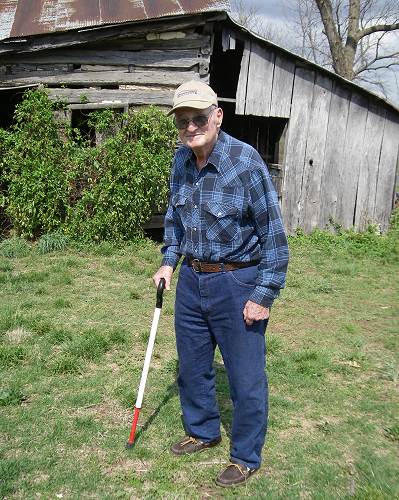
02 Robert Groff - Allen Cabin Behind
Harold, who was born and raised in Tuscumbia and is a carpenter, inspected the cabin thoroughly as did I as well. The cabin has deteriorated through the years and also has had a frame wooden structure attached to it. Here are some of the photos of it as it stands today (photos 03, 04 and 05):
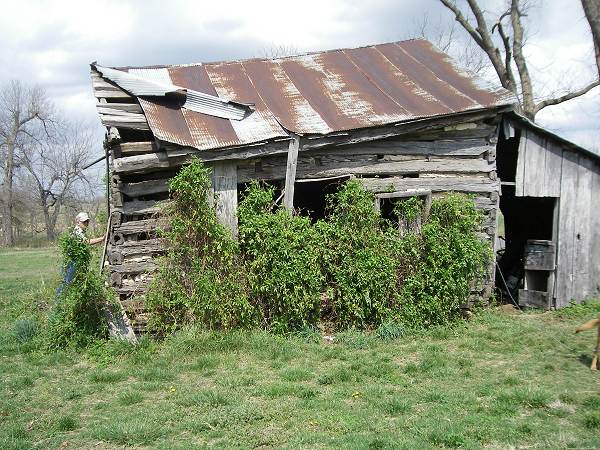
03 Cabin from Front - Harold Flaugher inspecting on Left
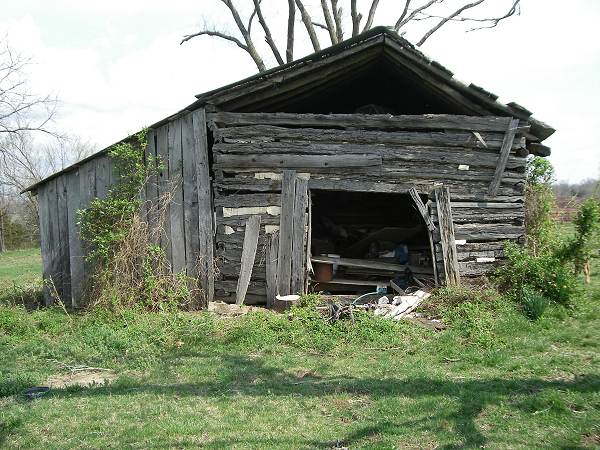
04 North end of Cabin
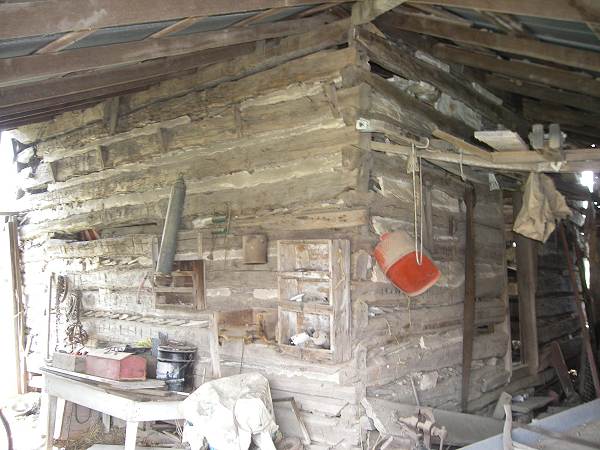
05 Inside lean-to at South East corner of Cabin
Harold’s and my assessment was that enough of the logs had rotted that disassembling and reassembling on our museum grounds would be very difficult. Since we already have two old log cabins on our campus, one of them originally also having been a home for slaves on the John Williams farm (near Iberia), and because of a lack of a suitable location for display, I told Eugene that we didn’t feel we should attempt to move the cabin. Here is a photo of the Lupardus and Williams cabins on our campus (photo 06):
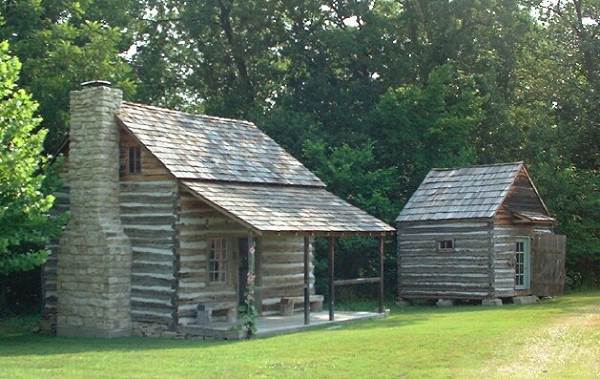
06 Lupardus and Williams Cabins
But the story of the old Allen cabin is interesting, especially since it predates the Civil War, and historically has been known as a dwelling at one time for African Americans who had been enslaved prior to the Civil War. Peggy Hake, one of our foremost Miller County historians, has researched the history of the cabin and its two owners, the Allen and the Groff families. Here is what she wrote:
Allen Cabin
By Peggy Hake (photo 07)
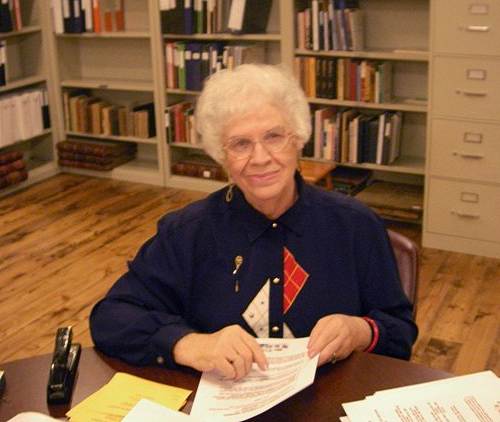
07 Peggy Hake
Probably the oldest building standing in Miller County is an old log cabin on the Robert Groff farm east of Iberia. The cabin was the home of slaves, owned by the Allen family for many years before the Civil War. The name "Allen" was imprinted in the mortar used between the logs.
The probable owner of these slaves was Elias and Mary (Gardner) Allen, natives of Barren County, Kentucky. The Allen and Gardner families came to Miller County in the early 1840's and brought several slaves with them. Elias and Mary homesteaded east of Iberia so it can be presumed they owned the slaves who resided in the old log cabin.
In 1859, Elias was assessed by Miller County's Assessor as owning six slaves valued at $1,950. In 1860, he owned five, valued at $1800; and in 1862, he was assessed $500 for five slaves. You can see how the Civil War era brought about a great change in slave ownership.
When Benjamin Groff came to Miller County, he bought some of the Allen land where the slave's log cabin was located and where they still lived. He freed these slaves, but some stayed and worked as hired hands for Mr. Groff.
Benjamin was partially blinded during the Civil War and after he returned home, he and the former slaves were cutting wood and a tree fell on Benjamin and he was killed. The hired man's name was Allen, a good friend of Mr. Groff, who said he would work for him as long as he was needed.
Benjamin died on December 8, 1869, at the age of 37 and was buried at Iberia Cemetery. His wife, Diana, remained his widow for 40 years and died on April 4, 1909. She was buried beside Benjamin at Iberia Cemetery:
Benjamin Groff, June 19, 1832-December 8, 1869
Diana Groff, January 7, 1833-April 4-1909
The children of Benjamin and Diana Groff were:
John K. Groff 1854-1939 m. Carrie Mackney
Hervey (Harvey on tombstone) W. Groff 1856-1945 m. Louisa C. Mace
Alice Groff 1858-1943 m. Eleven C. Thompson
Elmer Ellsworth Groff 1861-1930 never married
William Sherman Groff 1866-1923 m. Anna M. Mackney
Albert B. Groff 1869-1930 m. Minnie J. Cross
Here are portraits of Benjamin and Diana Groff which are hung in a bedroom which Robert Groff allowed me to photograph (photos 08 and 09):
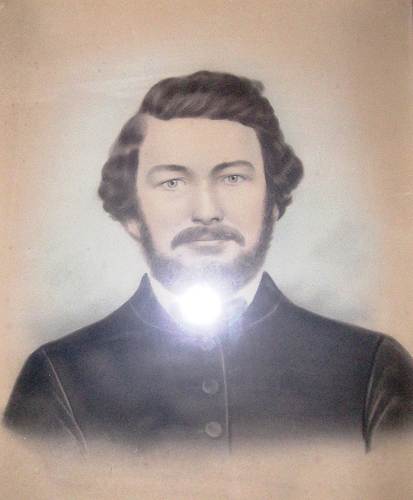
08 Benjamin Groff
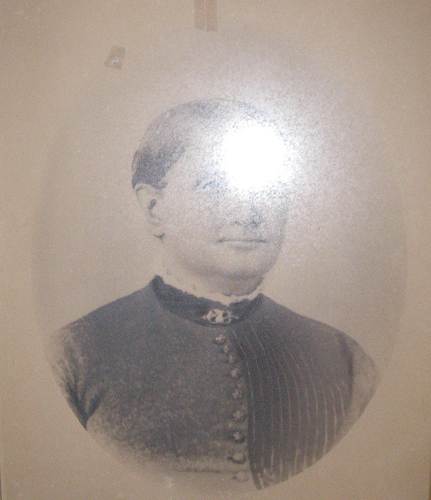
09 Diana Groff
These are very old portraits since Benjamin was killed in 1869.
Robert’s grandparents, Harvey (Hervey) and Louisa Groff are pictured here (photo 10).
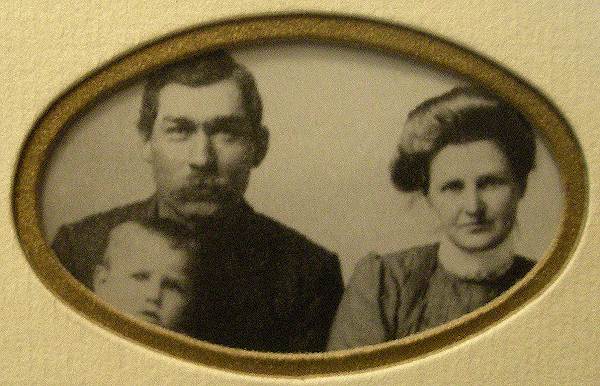
10 Harvey and Louisa Groff
Here are two photos of the home in which Robert was raised (photos 11 and 12):

11 Original Groff Home
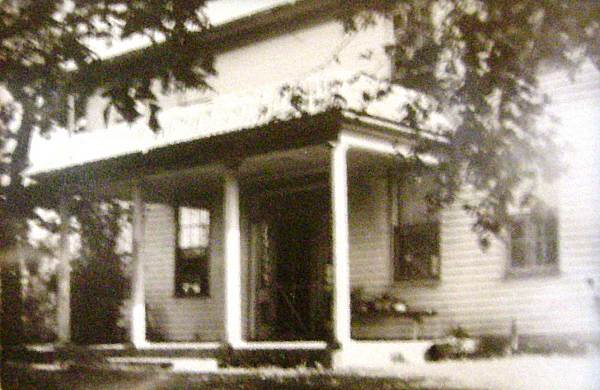
12 Original Groff Home
The home no longer is standing; Robert is unsure but thinks his grandfather built the house.
Here is an aerial photo of Robert’s farm in which his present home is pictured (photo 13):
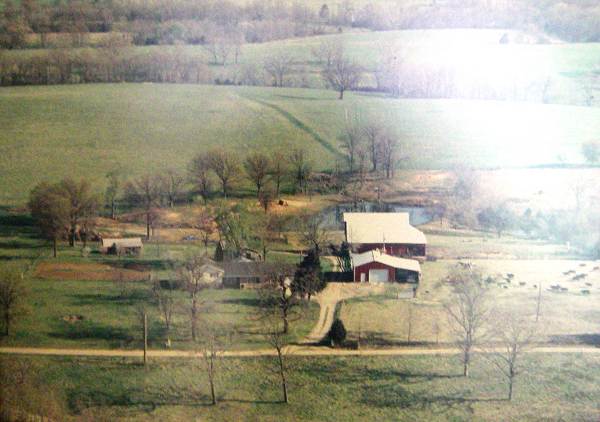
13 Croft Farm Aerial Photo
And here is a plat map which demonstrates the location of the extended Groff family farms in 1905 close to and east of Iberia (photo 14):
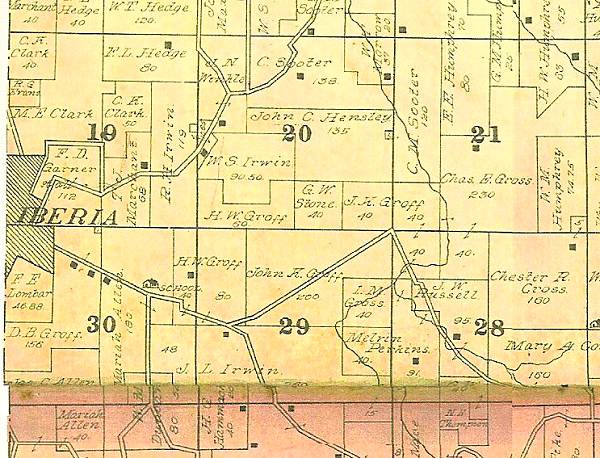
14 T39N-R12W - Sections 19, 20, 21, 28, 29 and 30
Robert likes to fish; in fact, he has a 25 acre lake well stocked for his fishing hobby. Robert served in the Army during WWII. Here is a photo taken of him while on leave sometime in the early 1940’s after he had caught two huge catfish out of the Big Tavern Creek (photo 15):
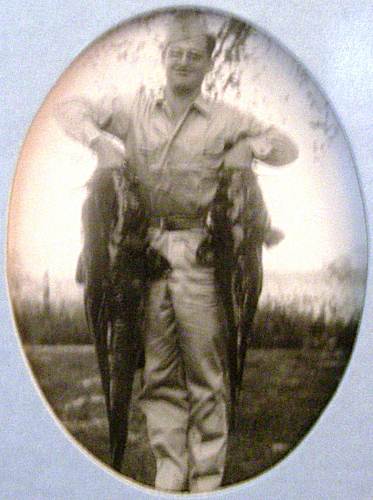
15 Robert Groff with catfish from Tavern Creek
Note: The quality of the photos above was impaired due to reduced light available in the immediate vicinity of the hall where they were hung.
More information about the Allen family, original owners of the Groff farm and the old slave cabin, was written by Peggy Hake in her narrative about the history of the Iberia Cemetery. Because this history includes so much information about the Allen family I will copy it here from our own website:
Iberia Cemetery
Peggy Hake
I have had some inquiries recently asking if I knew anything about the graves that are located outside the south wall of the Iberia Cemetery. Several years ago I wrote a story about the graves and since there may be those who did not read it the first time, I am going to reprint it once again.
The present cemetery at Iberia has been in existence for more years than most realize. Outside the south rock wall there is an old gravesite that a tombstone and then inscribed is Elijah Dyer. The Dyer family was among Iberia's earliest settlers. They came into the Big Richwoods in the late 1830s. Elijah Dyer was the son of Haman and Frances Dyer and died at an early age.
I have been told there are several graves in that area of the cemetery where Negro slaves were buried, but I have not been able to confirm this because all the people who would have had first-hand information are long gone. I have interviewed some of the older residents of the area and all have told me they heard the stories of the slaves being buried there but did not know when or where this happened. I decided to use the next best solution and try to do some research to see if I could come up with anything concrete.
There were several early families in the Iberia vicinity who were slave owners according to assessments made before and during the Civil War years. These assessments are at the courthouse and the black people were assessed the same as the pioneer's livestock! It is difficult for me to comprehend all that occurred in those years and even more difficult to try to write about it.
Elias Allen came to Miller County from Barren County, Kentucky in the early 1840s. He was born 24 August 1809, a son of Isaiah and Rachel (Brown) Allen. His parents, brothers, and sisters also came to Miller County. Elias married Mary Gardner on 6 January 1842 in Miller County and she was also native of Barren County, KY. She came to central Missouri with other members of the Gardner family.
The Allen family was owners of several slaves and brought them to Miller County when they moved here. In the 1859 Miller County assessments lists, Elias owned 6 blacks; his brother, Joel Allen had 9; and their father, Isaiah, owned 8 slaves. By 1862, after the Civil War had begun, the three Allen families were still slave owners but the value of each had been drastically reduced.
Elias and Mary (Gardner) Allen bought land just south of the Iberia Cemetery location and owned it all their lives.
They donated an acre of land to the school district and the old Allen School was built on the site. It was the only school near Iberia for many years with the exception of Iberia Academy. After the Civil War, the Allen slaves were given their freedom and some remained in the Iberia vicinity. There is a marriage in Miller County records for the marriage of Josephus Allen to Stephanna Ann Allen on 2 December 1866, performed by Charles Tallman. They were former Allen slaves.
Another early pioneer family who owned land in the general area of the Iberia cemetery was Samuel P. and Mary Malvina Tucker. They also were slave owners. On August 31, 1858, the Tucker's conveyed a parcel of land "13 rods square" (one acre) to the Trustees of the United Baptist Church of Christ in the Big Richwoods. The trustees names were Reuben Short, James Bowlin, Paulin Gardner, Alvis Dunkin/Duncan and William R. Right/Wright. In the deed it stated the land was "for the use and benefit of said Baptist Church for a place of public worship and cemetery for the use and benefit of the neighborhood and to be kept expressly for that purpose." That was the first mention of the old cemetery that is still in existence.
A church was built on the land which is now part of the Iberia Cemetery. I do not know how long the old church existed but do know local residents sometimes called it "Sulky Church" because of conflicts that arose from time to time within its membership and the attitude some showed toward others!
In old death records at the courthouse, I found some folks were buried in 'Sulky Cemetery' including: Walter F. Bilyeu d. 1884 age 3 months; William I. Bilyeu d. 1888 age 18 years; Frank B. Condra d. 1888 age 30 years; Henry Paulin/Paulding Gardner d. 1887 age 73 years; baby male Gardner d. ? age 12 days; Stella D. Trent d. 1886 age 10 months; George Long d. 1886 age 85 years; Charles Arthur Mace d. 1886 age 1 month; Leonard L. Sclone/Slone d. 1884 age 3 years; and Pearl S. Skaggs d. 1886 age 2 years. Only three of them have gravestones---Henry Paulin Gardner, Charles Arthur Mace, and Pearl S. Skaggs. NOTE: Henry Paulin Gardner was my great, great grandfather who came to the Iberia area in the early 1840s with his wife, Elizabeth (Bailey) Gardner and their children. They were also from Barren County, Kentucky.
The oldest graves in Iberia Cemetery are located on the north side toward Highway 42, easily visible as you enter the grounds. The earliest burial record in Barnhouse and Kelsey's "Inventories of the Iberia Cemetery" was in 1868 and many people died over the next 3 decades of the 1870s-80s-90s.
The Tuckers and the Allens were landowners in the cemetery area in the 19th century and are buried at Iberia Cemetery, so they did not leave Miller County but remained in the Iberia community until their deaths:
- Elias Allen 1809-1891
- Samuel P. Tucker 1817-1896
- Mary Allen 1821-1894
- Mary Malvina Tucker 1822-1884
Once can only speculate now about slaves being buried in unmarked graves at the site of the old church and original burying ground of Iberia Cemetery. Knowing that the families of Elias Allen and Samuel Tucker owned several slaves each and both owned land in the cemetery area, I am left with the assumption that one or both families may have buried their Negroes at Old Iberia/Sulkey Cemetey….as with the identity of the Unknown Soldier at Arlington National Cemetery, only God knows for sure……Since the Dyer family were not listed as owners of slaves, I am almost certain that if there are any blacks buried near Elijah Dyer, they were not part of the Dyer household……
NOTE: There are several graves of the Lawless/Lollis family in the Iberia Cemetery and they have gravestones to mark their burial places. They were born slaves but were given their freedom after the Civil War and remained in the Iberia area. May people remember the Lollis families of the Big Richwoods…….. I also have the obituary of William Driver, a black 'Free Will Baptist' minister who lived and died in the Iberia community. According to his obituary, he was also buried at Iberia Cemetery in the 1930s but his gravesite was not recorded in the inventoried records of Barnhouse and Kelsey and he does not have a tombstone that marks the place of his burial.
Robert Groff, whose family bought their farm from the Allen family, told me that he is of German ancestry. His family was one of quite a number of those of German descent who settled in Miller County. Peggy Hake wrote a detailed narrative about these settlers, including Benjamin Groff, which I have copied here:
Many Miller Countians Have Dutch Heritage
Peggy Smith Hake
The Miller County Autogram Sentinel, Thursday, January 7, 1988
There are so many families living in Miller County today (primarily in the Big Richwoods area) who are descended from the most remarkable pioneer folk you will ever hear about. These were the Pennsylvania Dutch ancestors who left their eastern homes to travel westward in search of a new land to homestead and settle.
In the time era of 1859, prior to the outbreak of the Civil War, Colonel James Moore and Matthew Brown joined forces and brought their families to Missouri (photo 16).
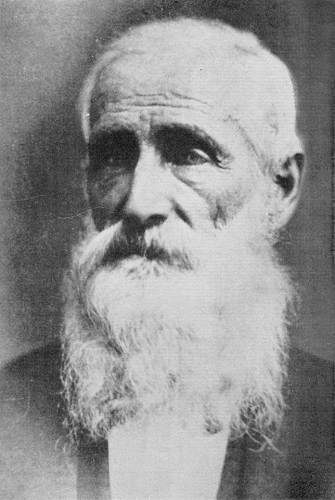
16 James Moore, III - Father of Bucknell University
Both families traveled by train from Pittsburg, Pennsylvania to St. Louis; crossed the mighty Mississippi on a ferry boat; and traveled the remainder of the way by wagon. They brought a great deal of furniture and other items with them on this long trip including a Lincoln bedstead, a bureau, a flax spinning wheel, a stove with an oven on top, an old fashioned child’s cradle, silverware, chinaware, and several old books which today would be classic rarities. These books printed on homemade paper and bound in leather, pertained to history, philosophy, religion and classics of Greek and Latin. The publication dates ranged from 1813 to 1856; the oldest one in their possession was “The Book of Martyrs” by John Malkam (1813). I understand that Mrs. Charles Newhart, a granddaughter of Colonel James Moore, had possession of all these articles in the 1930’s.
Colonel James Moore had been a Curator of the Lewisburg, Pennsylvania (now Bucknell) University. His son, Edward, graduated from this fine, old school in 1852.
Matthew Brown was born in Lycoming County, Pennsylvania near Williamsport in 1795. When he attained manhood, he moved to Clearfield, Pennsylvania and purchased a newspaper called The Clearfield Banner which he continued to publish until 1837. That year he went back to his home county and settled near Uniontown (now Allenwood) and engaged in general merchandising and he conducted a profitable business until his decision to move west. While at Uniontown, he owned the farm where he was born, two miles west of the small village. There he erected the largest barn in White Deer Valley in east central Pennsylvania. In the spring of 1859, the Brown’s and Moore’s left White Deer Valley, Lycoming County, Pennsylvania and headed toward Missouri.
I am in awe of these pioneers when I realize they were prosperous businessmen and landowners in their eastern homeland, but decided to start out on a new adventure in a strange land. It was told by the old timers that they hoped to find a good country to raise cattle and also provide work for their boys who may otherwise have grown up in idleness.
When the Pennsylvanians arrived in Miller County, they found the country wild and sparsely populated. Grass, higher than one’s head, covered much of the fields and hills. Wild animals and game were plentiful, such as the deer, wolf, quail, turkey, fox, rabbit, and squirrel. The hills were covered with dense woods in part of the Big Richwoods with the oak and walnut most prevalent.
The Brown family purchased a tract of land containing 415 acres near the Tavern creek south of Iberia. Matthew called his new farm “Brownsylvania.” In later years the farm was owned by David Petrikin, a grandson of Matthew Brown and today is owned by the John Porter family. Colonel Moore bought a place adjoining the Browns toward the west containing 400 acres. Both families built log homes on their newly acquired Missouri land. These homes were a “new breed” of architecture introduced to our part of the country.
The log houses were first built as two separate one room units but connected with a common roof. They were known as “dog trot” houses and inside the covered space, between the two log cabins, hung the winter’s supply of dried vegetables, wild animals’ skins, sides of bacon and seed corn for next year’s planting. Each unit had its own fireplace and as their family increased, rooms were added to the top of each cabin with an outside stairway for access. The only heat these rooms had was what drifted up from the room below.
Colonel Moore put up a building and opened a general store in the area south of Iberia. He had forwarded a stock of goods from Pennsylvania so that he could establish his mercantile trade in Miller County. But his store was short lived because after only a few months, Colonel Moore died and his family had to close their new business.
Within a short time after their arrival in Miller County, the Civil War broke out. The Pennsylvanians were northern sympathizers. They entered this war, serving the Union forces, and John D. Brown, son of Matthew, was wounded at the famous Battle of Wilson’s Creek near Springfield. He also participated in battles at Prairie Grove, Arkansas and Vicksburg, Mississippi.
The Pennsylvanians had rough times during those dark years of Civil War. They were northerners and had supported Abraham Lincoln in the election of 1860. Many men of the county were Confederate sympathizers and they formed a military company in the early spring of 1861, pledging allegiance to the Southern cause and favored secession.
In May of 1861, Articles of the Confederation were drawn up by officers and riders of this newly formed company and they issued messages to all the Dutchmen in Richwoods township including the Pennsylvania Dutch and the German immigrants, that they must sign this Oath of Allegiance…but nobody responded! Talk about grit! There followed in the ensuing months, attempted lynchings; beatings; destruction of homes, livestock and harvested crops; abandonment of farms for long periods of time. This harassment continued on for many months.
When military groups were formed in the Union army, the younger Pennsyvanians enlisted and fought in many battles. Some of the soldiers were: John Brown Tallman; Jeremiah W. Tallman, son of William Tallman; Jeremiah Tallman, son of Charles Tallman; William Brown Tallman and John D. Brown.
After the war Jeremiah Tallman (photo 17) became active in Miller County politics serving as Sheriff, Judge of the Probate Court; and three times elected County Treasurer.
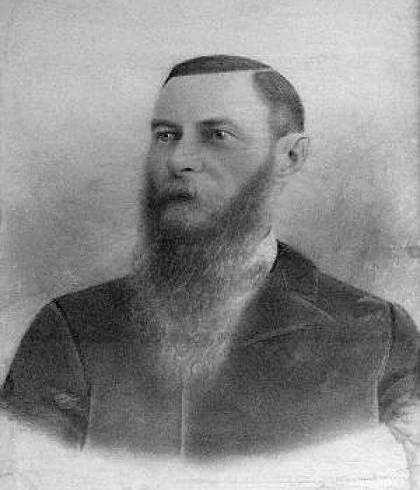
17 Jeremiah Tallman
Charles Tallman served as a justice of the peace for a number of years; served a term as associate judge of the County Court; and was appointed by the governor to an important office in January, 1869, but he died one month later from lung congestion.
The families of Charles and William Tallman, John Bennage, Benjamin Groff, all of Lycoming County, Pennsylvania and William Irwin of Mifflinburg, Union County, Pennsyvania, came to Missouri just shortly before the Civil War (photo 18).
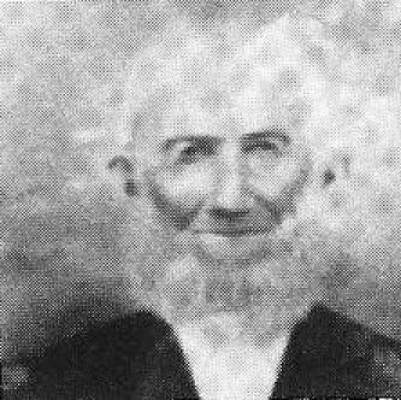
18 William Laird Irwin
Colonel Moore had written these folks telling them that the land was cheap; the country side desirable, and a man’s living was easy in Missouri. Due to his urging, they all moved here about the same time in the mid 19th century.
William Tallman was educated in the public schools at Williamsburg and his first job was working for his father in the boat and shoe business. He later worked in Philadelphia at the same trade. He learned surveying and assisted in laying out the new town of Lock Haven, Pennsylvania before finally getting the ‘westward fever.’
Charles Tallman spent most of his life on his father’s farm across the west branch of the Susquehanna River near Williamsport. (This is gorgeous country! I took a trip through our eastern seaboard states in 1976 and I followed the Susquehanna River across Pennsylvania through Williamsport, Harrisburg, and southward into Maryland).
Charles Tallman married Isabella Brown and they settled in White Deer Valley near the old Brown homestead. He and Isabella reared their children on this farm and in their later years of life they sold out and came to Miller County, arriving in April of 1860. Charles died in 1869, only one month after being appointed to an important job by his personal friend, Joseph Washington McClurg, Missouri’s Governor from Camden County, elected in November, 1868 (photo 19).
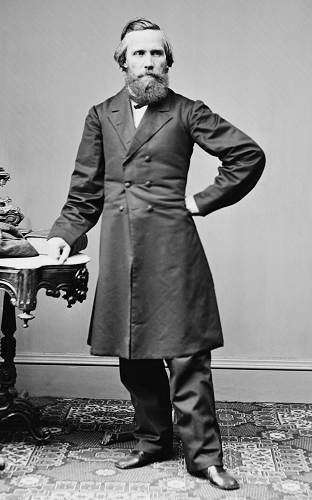
19 Joseph W. McClurg
After the war, the families of David Farnham, John Hedge, William Newhardt, John Clark, John Hess, George Johnston, and George Heltzell came to Miller County from Lycoming County, Pennsylvania. All these families remained, except the John Hess family, and their descendants are numerous today. Most came by train arriving in Arlington, approximately 30 miles southeast of Miller County in Phelps County, and traveled the rest of the way by wagon. A few came by steamboat up the Ohio, the Mississippi, and the wide Missouri to Jefferson City, and finished their trek by wagon.
The families homesteaded chiefly in the Iberia vicinity. They began planting fields of corn, wheat and alfalfa. They also raised vegetables and planted a great deal of tobacco on their new acreage.
Most attended the only church in the area which was the Big Richwoods United Baptist Church of Christ, but known over the years as ‘Sulky Church’ (of course, there is another story behind that name, as you might guess). The church was an old log structure, erected on the site of Iberia’s city cemetery. Some old graves can still be found that surrounded the old church, but I am sure there are many pioneers lying in the area in unmarked graves.
The Pennsylvania children attended the one room, log school called Allen School. It was located about one mile east of present day Iberia. The land for the school was donated by a Kentuckian, Elias Allen, and was the only school near Iberia for many decades. The school term only lasted about three months in the fall of the year after the crops were harvested and the only subjects taught were reading, writing, arithmetic and spelling.
Through the years, these Pennsylvanian pioneers continued to be important assets to our community. In 1890, when the Iberia Academy was begun, the children of these pioneers were among the school’s first students. By 1930, the Academy had graduated 299 students and 40 of that number were descendants of Pennsylvania settlers. These graduates continued on in higher schools of learning and became very successful men and women……John Bennage sent five of his children through this Academy. Three children of John D. Brown; grandchildren of Matthew Brown; eight grandchildren of David Farnham; two grandchildren of Benjamin Groff; one granddaughter of John Hedge; one grandson and one great granddaughter of Colonel Moore; two daughters of George Johnston; four grandchildren of William Irwin; three grandchildren of George Heltzell; and two great grandchildren of Charles Tallman were among those who had graduated from the Academy by 1930 and after that date, the newer generations of these Pennsylvanian settlers continued on until the school’s closing in 1951.
The Pennsylvanian Dutch pioneers left their eastern homes almost 130 years ago, settling in Mid Missouri, searching for their promised land. Here they found bounty in the fields as they tilled the rich earth of the Big Richwoods. It was said that they were in “a promised land where you have no need to work for the land is so rich you may plant a crowbar at night and it will sprout ten penny nails by morning.” This was a farfetched, enthusiastic report of our Missouri country, but it brought settlers to our territory and they left us a wonderful heritage.
Returning to the subject of log cabins, about which this week’s narrative began, many of the log cabins of the past are gone and those which are still standing are abandoned, gradually deteriorating, soon to fall to the ground. Peggy Hake, whom I am quoting extensively this week, wrote about another log cabin which has some interesting history:
SHELBY CRANE LOG HOUSE
By Peggy Smith Hake (photo 20)
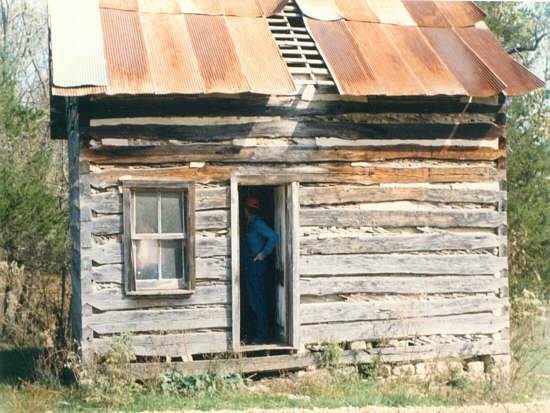
20 Shelby Crane Holler Log House
The old log house pictured is located in Equality Township in what is called "Shelby Crane Holler". It is near Dog Creek and was the home of the Phillips family during the 1930s. Ialeen Phillips Duncan of Excelsior Springs, MO, remembers living in the log home when she was a child and she attended Dog Creek School, not too far away, about 1937 when she was only 4 years old. Her school principal that year was Logan Stone who taught in many country schools across Miller County in the days before district consolidation (photo 21).
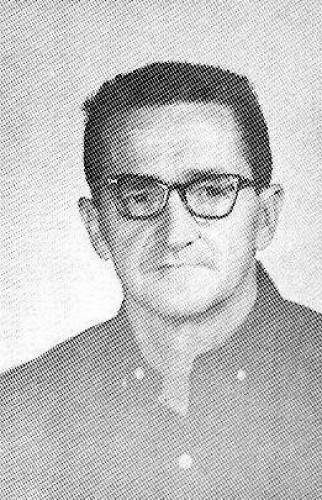
21 Logan Stone
I was a little curious how "Shelby Crane Holler" got its name, so decided to do a little research to see if I could learn more about the name and the following is what I learned:
Charles Shelby Crane was a son of John and Rachel (Boltz) Crane who lived in Equality Township in 1880. They had several children, including:
- 1. Emma S. Crane born c/1868 m. Grant Patterson in 1888
- 2. Leander F. Crane b. 1871 d. 1973 m. Rosa Colvin in 1896
- 3. Charles Shelby Crane b. 1874 d. 1963 m. Anna Belle Colvin in 1894
- 4. David L. Crane b. 1877 d 1956 m. Rutha Jane Kinder in 1897
- 5. William C. Crane b. 1880 d. ? m. Estelle C. Markle in 1901
In the census of 1900, Shelby C. (Charles) Crane was living in Equality Township with his wife, Annie B. Crane, and their 2 children: Clora A. born April 1895 and Effie Z. born July 1897. Their neighbors in 1900 were Grant and Emma Patterson (Emma was a sister to Shelby), his parents, John and Rachel Crane, Leander Crane and his family (brother to Shelby), David and Rebecca Horton, William and Cordelia Neal, and Calloway and Mary Workman.
Shelby Crane and his wife, Annie Belle (Colvin) are buried at Gott Cemetery, located on Hwy. C about midway between the little towns of Brumley and Ulman. Most of the Crane family is buried at Gott Cemetery.
One old home in Miller County was built with logs but later weather boarded over. I learned about it from an old Eldon Advertiser photo from a clipping someone donated to the museum. The building is known as the Corbin Moore home. Here is a photo of the home I copied from that edition of the Advertiser (photo 22).
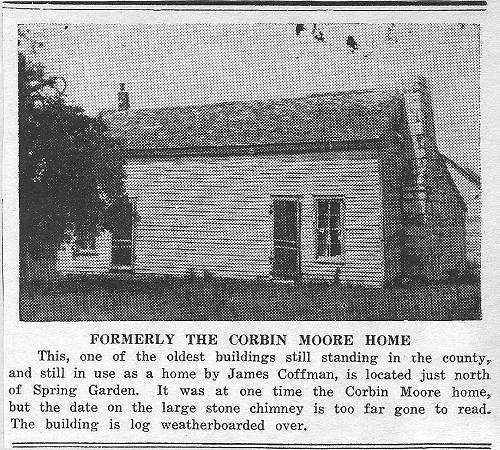
22 Corbin Moore Home
Click image for larger view
Very little information is known to me about Corbin Moore. Even Peggy Hake could not locate information about him from her research. DeVere Whitaker did publish on the Roots Web site some census data about Corbin Moore which is listed here (photo 23):
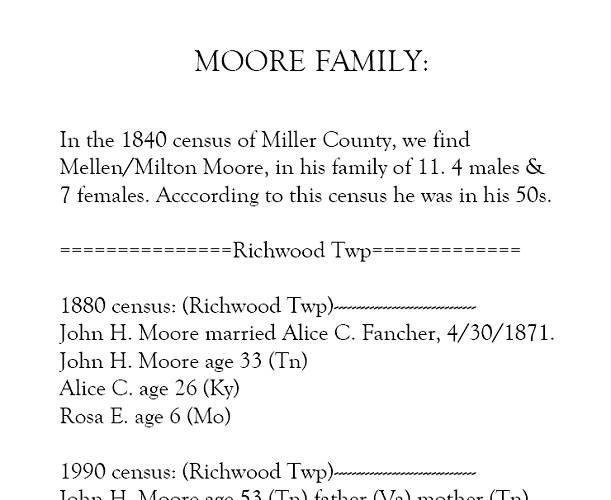
23 Moore Family document by DeVere
Click image to view entire document in PDF format
A copy of Cole County Circuit Court hearings taken from the Goodspeed Publishing Company history of Cole County records this brief sentence:
“In May, 1853, Corbin Moore was indicted for manslaughter.”
Of course, consideration must be given to the possibility of the existence of more than one Corbin Moore in Central Missouri before coming to any certain conclusion.
If you happen to come to our museum when Carl McDonald, our vice president is hosting, he can tell you much more about the history of Miller County log cabins (photo 24).
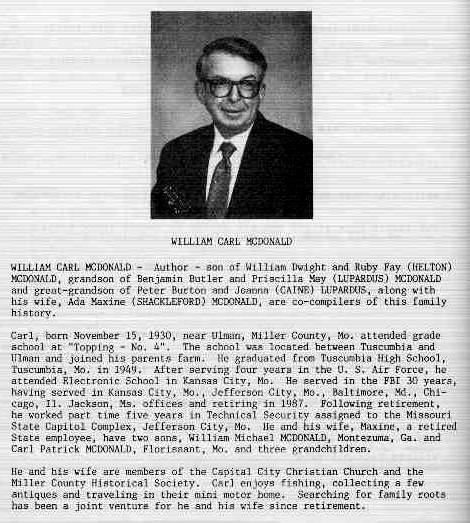
24 Carl McDonald
Carl was the one in charge of moving the Lupardus Cabin to our museum campus, an effort which took about four years of labor, all with volunteer help. You can read more about that at this previous Progress Notes.
The last residents of the Lupardus cabin were Willard and Maggie McDaniel Boyd. Here is a photo of them in front of the cabin before it was moved to our museum campus (photo 25).
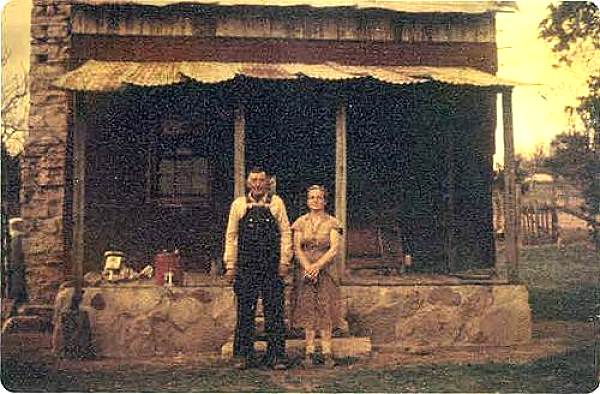
25 Willard and Maggie Boyd at home in the Lupardus Cabin Original Site
Just click on these links to read the histories of the Boyd family and the McDaniel family.
We have a display of one of the infant dresses of Willard Boyd and a photo of Willard as a young child in one of our museum stair cases. These were donated by his daughter, Elva Boyd Steen (photos 26 and 27).
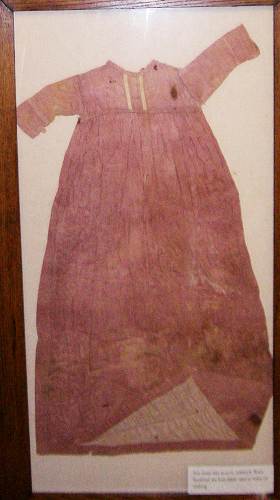
26 Willard Boyd Infant Dress
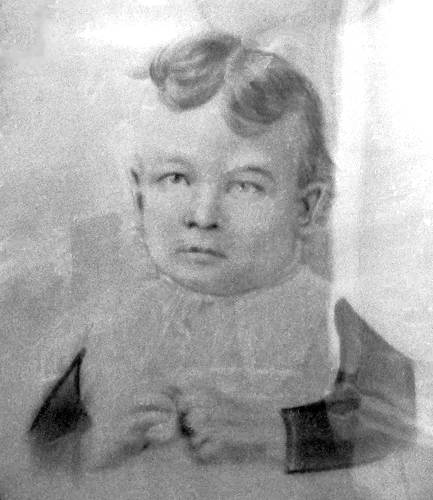
27 Willard Boyd as Infant
b. 12 March 1899 - d. 06 February 1985
As we approach the 2012 Opening Day of our museum scheduled for Saturday, May 19 many preparations are in progress. Just recently, with the help of Bill Weidinger of Eldon, two new computers were purchased with funds which were given by an anonymous donor. Here is Bill the day he coordinated and programmed our two new computers with other devices in a network configuration (photo 28):

28 Bill Weidinger
And here are Karen Smith on the left and I on the right checking out the new equipment (photo 29).
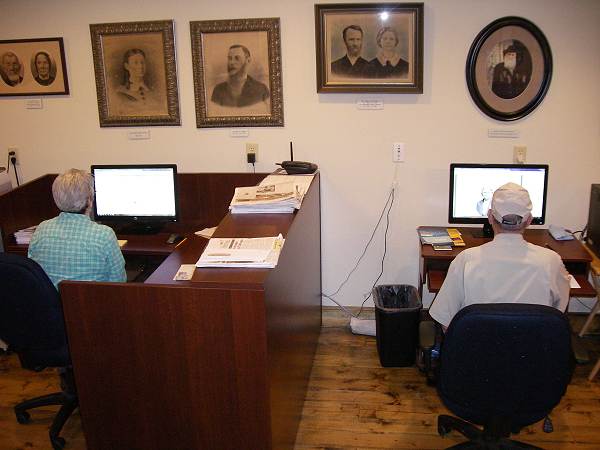
29 Karen Smith and Joe Pryor
One of many tasks performed for us by board member Harold Flaugher was the placement of an old box of maps originally belonging to the historic Spring Garden one room school. Harold fixed securely this heavy wooden case of maps on the wall of our historic one room school model (photo 30).
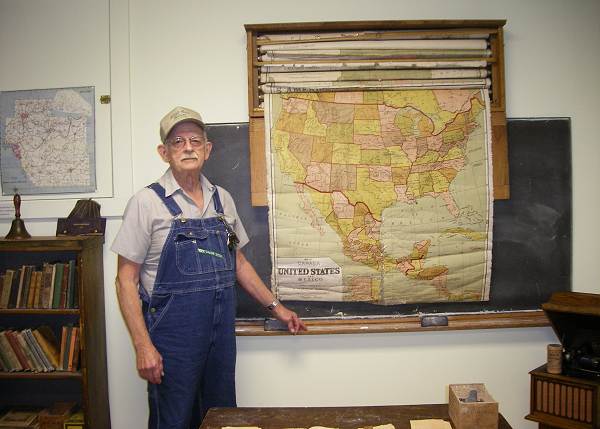
30 Harold Flaugher and Spring Garden Map Box
You can read more about the map at this previous Progress Notes.
We have a new feature added to our website which gives the history of the many steamboats which navigated the Osage River. It is a video with narrative and many many photos of steamboats. You can access it from the top of our Home page under the selection Yesterdays following this path (or just click on the link below to go directly to the steamboat site):
Yesterdays > Transportation > Steamboating (video)
That’s all for this week.
 Joe Pryor
Previous article links are in a dropdown menu at the top of all of the pages.
|

